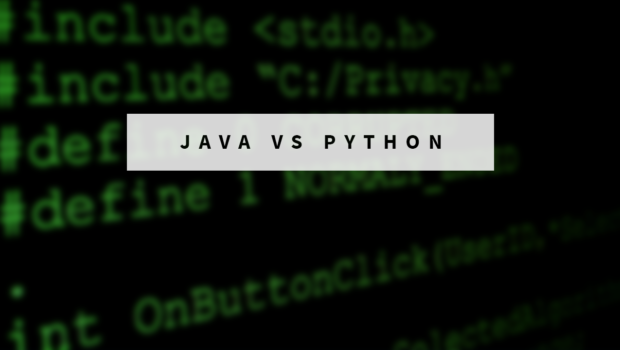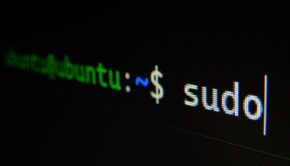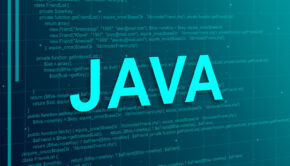Java or Python – Decoding Every Developer’s Dilemma
This comparison between Java and Python is to provide clear-cut knowledge about Java and Python in terms of their speed, agility, scalability, productivity, versatility and performance. It will help you consider factors important to different use cases and help you find out which programming language is the best to achieve your project goals.
Java
Java is an all-purpose, object-oriented programming language that is typically used for developing a wide range of web and mobile apps. It was created with the goal of write-once-run-everywhere; this language works seamlessly on every platform with as few glitches as possible.
Python
While Java is statically written, Python is progressively created for automation, machine learning, artificial intelligence and other dynamic data science apps. This high-level programming language is a free and open-source for all types of utilization cases.
Both these programming languages are almost flawless, and while they can accomplish most of the tasks efficiently, some key differentiators can help you arrive at the right decision when it comes to project realization.
Key Technical Parameters for Comparison
Because both Python and Java web development services are popular and preferred, a comparison of their key technical parameters becomes crucial for the successful and smooth implementation of any project.
| Technical Factors | Java | Python |
| Syntax | Java is a statically composed language and so, it employs strict syntax controls, which makes it lucid. | Python uses blocks of code that are divided by consistent indentation, which makes the syntax simple and easy. |
| Performance | Java is distinguished by static-typing syntax, which is quick and easy to compile and less prone to errors. Additionally, Java integrates a just-in-time compiler, which makes it much easier to recall the compiled code. This function adds to the efficiency and speed of the language. | In Python, the code is typically processed in the course of compile time and the variables are also taken into account during this time. This dynamic code syntax is not verbose and may not complement every platform. Plus, as Python is tested while it is being run, any issues that crop up in the program, put the entire app on hold. When all of these variables come together, the speed and efficiency of the language suffer. |
| Speed | Java is a compiled language which makes it much easier to execute and makes it faster as compared to Python | Python is a dynamically-typed language that determines the data type at runtime, which makes it relatively slower. |
| Agility | Java’s static type system offers more support when it comes to undeviating refactoring. Plus, the universality of IDE’s is more preferred for web and mobile app development. | Python has always enjoyed more preference in the talent space when it comes to creating advanced digital technologies such as AI, ML, and IoT as they need more flexibility for experimentation. |
| Legacy | Java’s verbose coding style and its history in development of enterprise solutions make legacy systems relatively larger, complex and multifarious. | Python has less legacy issues even if it was occasionally actualized due to its multifaceted nature, reliance problems, a chain of commands, and similar problems. Python has a slight edge over Java in this case. |
Python
According to a 2019 survey conducted by the Stack Overflow Developer, Python emerged as the fastest-growing programming language and also managed to surpass java. Popular apps like Instagram, Dropbox, Spotify, Reddit, YouTube and Quora have been developed using Python. This hassle-free, explicit and easily readable language is ideal for:
- Designing games
- Developing languages
- Graphic designing
- Image processing
- Building ML apps
- Prototyping
- Operating Systems
Benefits of Using Python
- Python integrates multiple features
Python is a multi-programming language that supports different functionalities like procedural, object orientation, function, imperative and more.
- Cross-platform language
Python is compatible with multiple operating systems like Windows, Linux, and Ubuntu, so even if the developer codes using Mac, it will seamlessly run on Windows.
- An extensive set of libraries
Integrated with numerous tools and libraries that further enhance its features and functions, Python is easy to code. It comprises of inbuilt exceptions, Scrappy, constant types, wxPython, exceptions, custom interpretation, directory access, file format, multimedia services, and Graphic User Interface Development Tools.
- Seamless support
Python is the most preferred language because it facilitates quick and easy resolution of issues. It incorporates advanced technology to accommodate the change in versions and facilitates the execution of countless ideas.
- Improved code readability
Python has superior code readability as compared to other programming languages. It uses white space indentation for delimited code blocks, which is undoubtedly better than curly brackets.
Popular companies that leverage the ease and flexibility of Python to meet client needs include Google, Netflix, IBM, Nasa, Walt Disney, Red Hat, and Yahoo Maps. Futuristic technologies that rely on Python for research and development are Artificial Intelligence, Big Data and Network Automation,
Java
Java has not only survived but dominated the digital market since its inception in 1995 as a general-purpose language and it is still the most popular language preferred by some of the biggest brands.
Key Features that Make Java the Most Reliable and Scalable Language
- Ease of use
Java is user-friendly with inbuilt libraries that are the most significant advantage as compared to other object-oriented programming languages.
- Allocation
Automated memory distribution, stack provision and garbage collection are what make Java stand apart from other languages.
- Security
Java is a perfect blend of high-security standards and safe programming.
- Portability
Java’s anytime, anywhere convenient and its wide range of hardware and software integrations make it a go-to solution for developers.
- Distribution
Java’s is a network competent programming language and its ability to send and receive files informally facilitates faster and efficient deployment of
- Desktop GUI Apps
- Mobile Applications
- Enterprise Solutions
- Middleware Products
- Embedded Systems
Which One Will Take the Top Spot in Future?
Both Java and Python are open sources equipped with massive networks that have stood the test of time. It means that developers will continue to find and fix bugs, making both the languages an appropriate choice over the years to come.
With continually evolving business needs, both Java and Python have the features and functionalities to offer faster and better digital solutions. Both languages can give businesses a competitive edge depending on their project requirements and the type of program that needs to be created.
While Java has always been the most popular language, Python found its place in the top five programming languages of 2020. So, considering the parameters mentioned above, the programming language that ticks full boxes on your checklist is the better alternative to go ahead with.
Businesses looking to harness the high performance, practical agility and speed of Java must partner with an experienced agency that is fully-equipped with all the tools and frameworks that fall under the purview of java web development services. An agency with the highest quality standards and a track record of timely delivery of Java projects can resolve your business challenges and maximize your ROI.
















